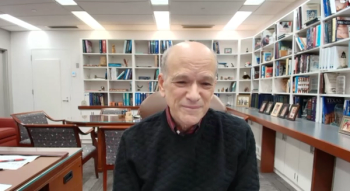
A Hopeful Contender for Bipolar Depression
This treatment is so implausible that scientists first used it as a placebo-before discovering it actually worked.
RESEARCH UPDATE
While some psychiatric breakthroughs are greeted with a hope that borders on hype (think ketamine), others are met with undue skepticism. The humble air ionizer falls into the latter category. These devices purify air by creating negatively charged oxygen ions. The idea that they could treat depression is so implausible that scientists first employed them as placebos, before discovering that they actually worked.
Evidence in unipolar depression
That
Which device?
Another factor that has limited their use is the difficulty of finding air ionizers with the right specifications. Without FDA regulation, it’s hard to know which device to use. Many ionizers produce ozone as a by-product, which can damage the lungs. Others don’t generate a high enough density of negative ions to treat depression. In the clinical trials, only high-density ionizers worked; low-density devices served as a placebo.
Recently, Dr. Terman has helped remove that obstacle by identifying a low-cost device that’s feasible for clinical practice: the
How to use
The Wein is easy to use, and Dr. Terman has a
Dr. Terman expects to see improved air ionizers in the near future and keeps updated product recommendations at
While we may not understand their mechanism in the brain, we do know what they do in the air, and that story has some natural appeal. If you’ve ever enjoyed the fresh air around a waterfall, ocean breeze, or humid forest, then you’ve experienced natural air ionization. When water breaks into the air, it creates negative oxygen ions. Those ions have a pleasant scent and also filter out pollutants such as cigarette smoke, dust, and mold. Indoor air tends to be depleted of negative ions, mainly because of the effects of air conditioners, heaters, and dehumidifiers.
Ionization and bipolar depression
What remains unknown is whether these devices will work in bipolar depression. One
On the other hand, we have no evidence that these devices destabilize mood, and Dr. Terman is not aware of any cases of hypomania caused by ionization.8 Air ionization has been tried in manic patients, with results that suggest it may improve manic symptoms. Those 2 studies did not have the rigor to conclude anything beyond the suggestive. They used a double-blind crossover design with single treatment sessions in a total of 28 patients.10,11 Their findings are consistent with a host of small studies in normal populations that suggest negative air ions improve irritability and tension, while positive ions tend to have the opposite effect.6 Dr. Terman8 does warn that the ionizers can raise energy and alertness, so they should be used in the morning if tried in patients with bipolar disorder.
The bottom line
References:
1. Terman M, Terman JS.
2. Terman M, Terman JS, Ross DC.
3. Goel N, Terman M, Terman JS, et al.
4. Terman M, Terman JS.
5. Flory R, Ametepe J, Bowers B.
6. Perez V, Alexander DD, Bailey WH.
Newsletter
Receive trusted psychiatric news, expert analysis, and clinical insights — subscribe today to support your practice and your patients.

















